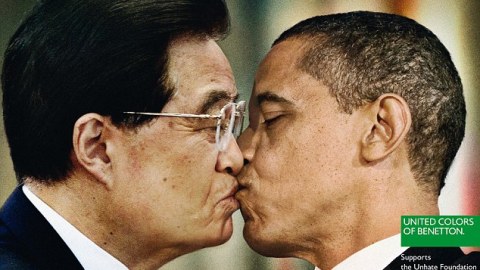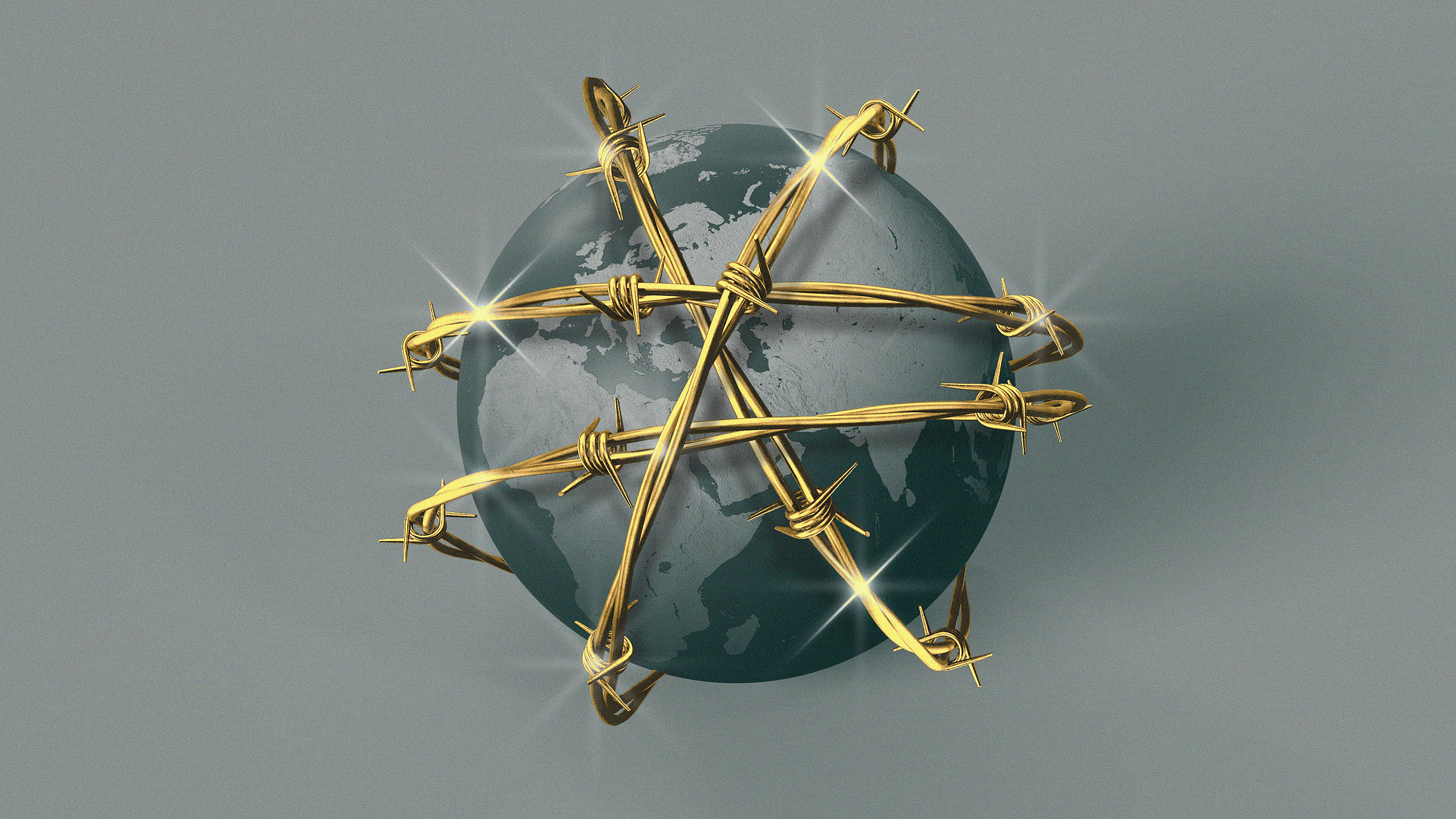Time to Unhate China?

Benetton’s controversial new “Unhate” ad campaign, which features pictures of world leaders like Barack Obama and China’s Hu Jintao caught in a liplock, actually raises a thought-provoking question: Is it time for the U.S. to unhate China? On Obama’s latest whirlwind tour of the Asia-Pacific region, it was clear that there is little love lost between the two countries. After years of being treated as a second-class citizen and a perennial whipping boy for everything that’s wrong in the world – from government censorship to unethical sweatshops – it’s clear that there’s a new-found confidence in China about its place on the world stage. This past week, when Barack Obama attempted to show off U.S. military muscle in Australia, Hu Jintao didn’t even bat a flirtatious eyelash.
In many ways, our “hatred” of China is rooted in a deep cognitive bias. We tend to filter out information about China to confirm what we think we already know. We view the U.S. and China as caught up in an unhealthy relationship: whereas the U.S. is forward-thinking and advanced, China is perenially playing catch-up, ripping off our ideas, and producing shoddy, second-rate goods. To keep up with the West, China must resort to all kinds of dirty tricks – which the West only tolerates because the Chinese buy so much of our government debt, thereby enabling the U.S. to continue its free-spending ways. This is a viewpoint that has been codified by academics, politicians, economists and think tank leaders.
Most famously, economic historian Niall Ferguson even came up with a name – Chimerica – to describe this love-hate relationship beween China and the U.S.:
“For the better part of the past decade, the world economy has been dominated by a unique geoeconomic constellation [known as] “Chimerica”: a world economic order that combined Chinese export-led development with U.S. overconsumption on the basis of a financial marriage between the world’s sole superpower and its most likely future rival. For China, the key attraction of the relationship was its potential to propel the Chinese economy forward by means of export-led growth. For the United States, Chimerica meant being able to consume more, save less, and still maintain low interest rates and a stable rate of investment. Yet, like many another marriage between a saver and a spender, Chimerica was not destined to last.”
Note how Ferguson uses terms like “marriage,” “relationship,” and “attraction” in this Harvard Business School article to describe the economic dealings between China and the U.S. The marketing folks at Benetton may or may not have a Harvard MBA, but they certainly are able to break things down to the most basic level.
In order to unhate China, we need a new way of thinking about the world. Which, thanks to the magic of Internet infographics, is easier than ever before. GOOD magazine recently showcased an infographic from the Heritage Foundation on China’s checkbook diplomacy. Suitors for China’s affection are emerging in resource-rich parts of the world like sub-Saharan Africa and Latin America. As it’s pretty easy to see from the infographic, just about the only thing China wants to buy from the U.S. these days is our government debt: “The more you look at this chart, the more you start seeing powerful forces at work. For one, you’ll notice that majority of China’s trading partners aren’t in Europe or America: They’re in Asia and Africa and South America. In other words, precisely those countries which have always spoken last on the world stage. China is using its economic relationships to create an alternative bloc of power, which can directly compete with the political might of the E.U. and America.”
By hating the Chinese, we’ve forced them into the arms of other, more attractive suitors.
The next time you think you “hate” China, keep in mind that you’re not hating a faceless Communist bureaucrat in a cheap Chinese suit. You’re not hating one of those new free-spending, gambling, luxury-loving Chinese spendthrifts in some mega-city like Guangzhou or Tianjin that seemingly appeared out of nowhere. You’re not hating a sweatshop laborer churning out cheap Chinese goods in a crowded factory. As National Geographic showed us earlier this year, you’re hating an average-looking 28-year-old kid from the sticks just trying to make a go of it, just like the rest of us.





